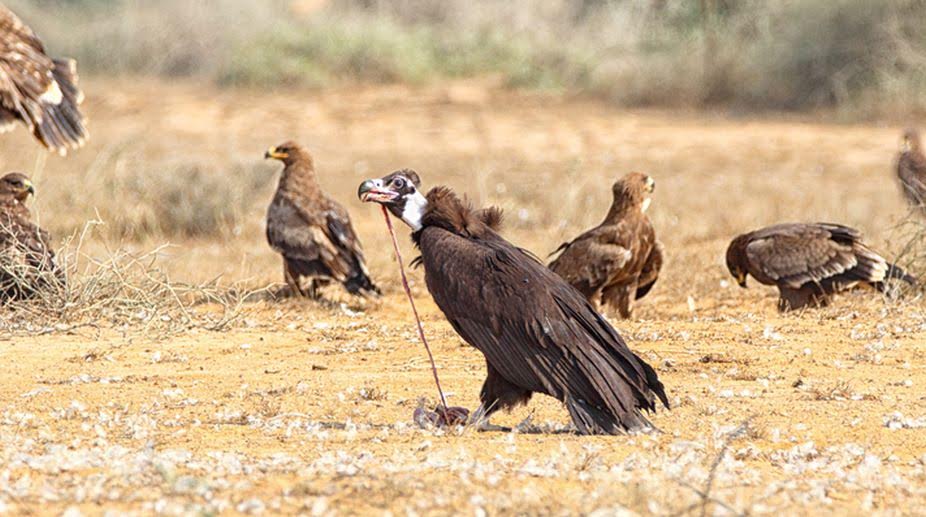Nearly 100 vultures found dead in Assam’s Kamrup district
The authorities of the state forest department had recovered the carcasses of about 100 vultures at Milanpur area under Chhaygaon police station on Thursday evening.

Representational Image (PHOTO: Getty Images)
In a most unusual wildlife health study, ornithologists trace the phenomenon of bacteria in a migratory vulture species that is gaining antibiotic resistance during its sojourn in India — and this is quite widespread and can be epidemic too.
But the drug-resistance bacteria are not necessarily harmful to the birds that have them, say the ecologists. The first-of-its-kind study on a wild migratory species in this part of the world has thrown up results that are both interesting and surprising. coli, or Escherichia coli, a pathogen seen in over 90 per cent of Egyptian vultures that migrate during winter in northwest India, changed during their migration, which means the local environment is a key component of E. coli strains, microbiologist Pradeep Sharma told IANS.
Advertisement
In an interview, he said the level of antibiotic resistance in the vultures was very high and the E. coli showed resistance to a wide range of antibiotics throughout their stay in India.
Advertisement
The resistance varied to different drugs over the winter.
This sort of study, published last month in the journal Infection Ecology and Epidemiology, to locate patterns of antibiotic resistance is novel to the microbial and wildlife world, said Sharma.
He’s working with the College of Veterinary and Animal Science of the Rajasthan University of Veterinary and Animal Sciences in Bikaner in Rajasthan.
A team led by Sharma studied vultures that arrived in Bikaner in October 2011 and departed in March 2012. They fed on cattle carcasses dumped in Jorbeer in Bikaner.
The study shows that in countries like India, where wildlife is frequently in contact with people and domestic animals, the government ought to be monitoring the health of wild animals much more to check any epidemic.
“Our study shows without doubt that current existing norms of WHO regarding multi-antimicrobial resistance in wildlife is restricted at the country level, which is of no use whatsoever as migratory birds can carry this phenomenon across borders,” Mysuru-based Nature Conservation Foundation scientist and co-author K.S. Gopi Sundar told IANS.
“Countries should be working together to monitor microbial health of wild birds if we are to have a chance of catching potential epidemic that can be an outcome of such high levels of antimicrobial resistance.”
Explaining reasons for the too-high antibiotic resistance, Sharma said birds such as vultures are scavengers and feed on dead livestock carcasses. In most countries, livestock are treated frequently with various drugs that include a range of antibiotics. Scavengers such as vultures, therefore, can pick up resistance due to exposure to the medicines in the carcasses.
“In our study we found that 72 per cent of the E. coli sampled showed resistance to various drugs. This is among the highest percentages found in the world,” said Sharma.
Birds that have bacteria with antibiotic resistance can certainly spread these to other birds that they come in contact with, or share the same environment with, Sundar said. Since vultures and other species are already feeding on livestock carcasses that have been treated with antibiotics, they are more likely to pick up resistance directly from exposure to the carcasses.
“Wild animal health in India is unfortunately not an aspect that has seen governmental attention, except when epidemics such as the bird flu break out. This situation needs to change,” Sundar said.
A wide range of bird species across the globe have been seen to exhibit antibiotic resistance.”We need expansion of similar studies both in India and in the breeding grounds of birds that winter in India. This is the only way we can understand levels of exposure, and how different countries may be contributing to bacterial antibiotic resistance in birds,” Sharma added.
Advertisement